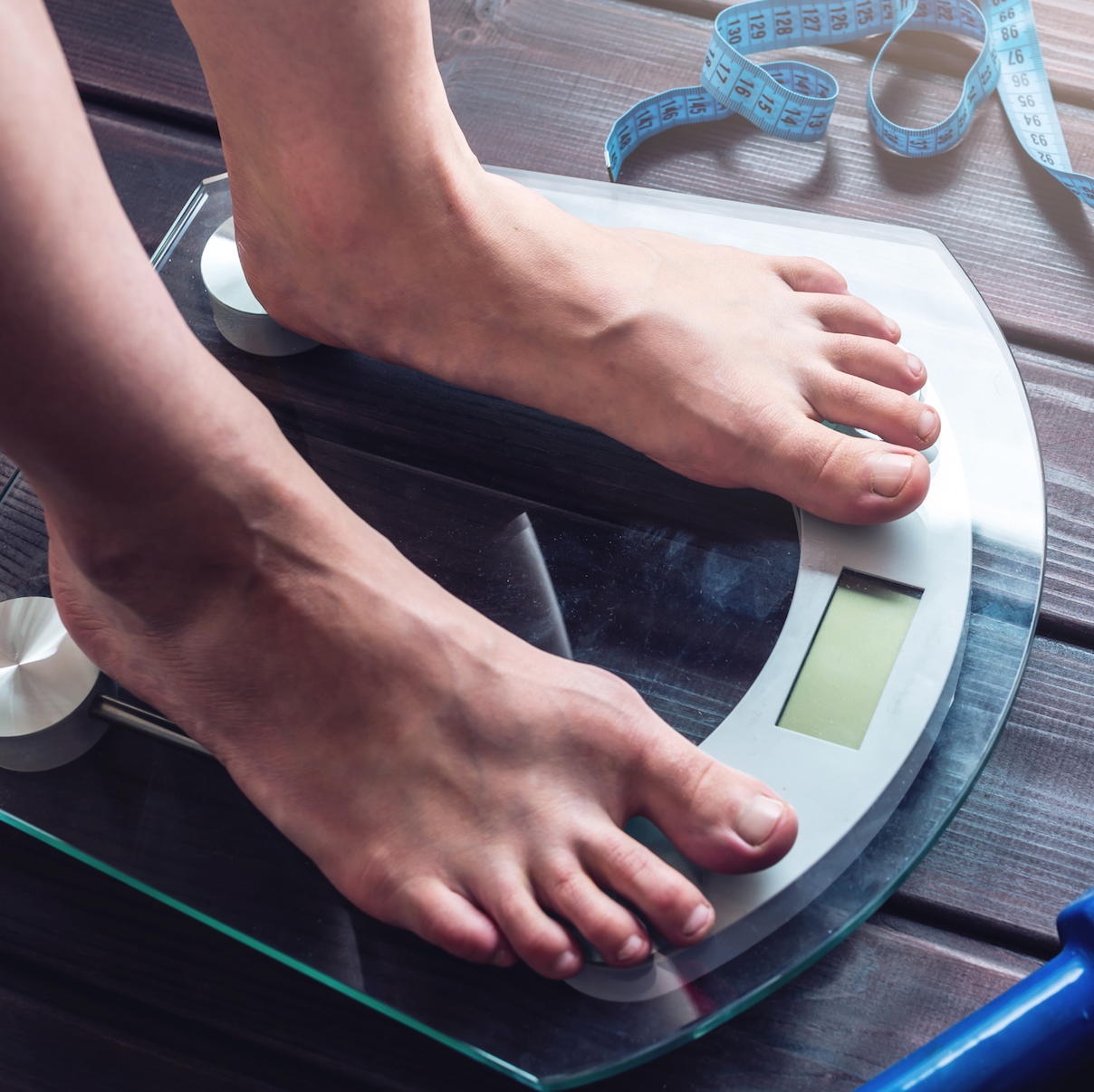
I was recently introduced to the concept of metabolic flexibility. Well, turns out I was already aware of the idea, but it was more the term I wasn’t familiar with.
Regardless, I think it’s a concept anyone trying to lose weight (or anyone who’s struggling to maintain a healthy weight) should be aware of, so I thought I’d share a few insights.
In this article, I’ll go over what metabolic flexibility is and what role it can play in weight loss and healthy living in general.
What Is Metabolic Flexibility?
Simply put, metabolic flexibility is our bodies ability to switch between the types of fuel it uses for energy.
I want to break that down a little farther and remind everyone that metabolism is the process by which our bodies break down what we eat and turn it into energy.
The energy every cell in our body needs to function throughout the day. This energy comes from the food we eat.
When we think about the food we eat, our diets can be broken down into the 3 main macronutrients: carbohydrates (carbs), proteins, and fats.
Carbohydrates are types of sugar and there are different kinds with varying degrees of nutritional value (simple vs complex, fiber, etc).
Proteins are the building blocks of muscle and come from foods like meat, fish, egg, and some grains/vegetables.
And even though fat gets a bad rap, it’s actually an important part of a healthy diet. Fats provide energy too, and it’s important to include a variety of healthy fats in your diet (like avocados, nuts, and olive oil).
All of these macronutrients are used by our bodies in different ways.
Generally speaking, our body wants to burn carbs for energy first. This is the preferred choice of fuel for shorter bouts of activity and once the supply of carbs in our body runs out, then our body switches over and starts burning stored fat.
Before I continue, I want to point out that I know that I am really simplifying this.
In reality, our bodies are transitioning through different phases of metabolism and I think it’s more of a continuum where our bodies are burning different combinations and ratios of these macros then simply going from A to B.
But thinking about it the way I’ve described can help make sense of it all.
So, our bodies burn sugar first, then fat to keep our bodies going. What about protein?
Our bodies don’t want to burn protein for energy and as long as we maintain a healthy diet, they really shouldn’t. That said, if we’re not eating enough or exercising intensely without enough fuel, our bodies can breakdown protein from our skeletal muscle for fuel.
And nobody wants this- the goal is usually to build muscle, not lose it.
Luckily, this won’t be the case as long as you’re eating enough.
Our exercise habits and diet play a big role in determining which macros our bodies are burning for fuel at any given time (usually between carbs and fat).
And the concept of metabolic flexibility refers to our bodies’ ability to switch between the process of burning carbs and the process of burning fat for energy.
Ok, But Who Cares?
Ok, the concept of our body transitioning between periods of burning carbs and periods of burning fat for energy is straightforward enough.
But why should I care about this?
Well, if you’re eating a healthy diet and exercising regularly and maintaining a healthy weight at the moment, you may not have to worry about this.
In that case, kudos to you! Keep up the good work and carry on- odds are your body is already functioning with adequate metabolic flexibility.
But…
If you’re one of the millions of folks out there trying to lose weight, than thinking about metabolic flexibility could be worth while.
When we’re trying to lose weight, it means we’re trying to lose fat- the 2 are synonymous. At least, I’ve never met anyone who was actively trying to lose muscle mass.
In order to lose weight (fat), we have to be in a state where our bodies are burning fat for fuel.
Or should I say, we need to spend more time in a state where our bodies are burning fat.
Unfortunately, it can be difficult to know when we’re burning fat vs burning carbs for energy. Knowing which metabolic state you’re in can make it easier, because you can alter your diet to match your needs based on that state.
I know this sounds a little confusing.
But it’s all about getting the right ratio of carbs to fats to get your body working more efficiently.
And basically, if you want your body to burn more fat, you have to eat less carbs. The fewer sugars that are running through your blood stream, the faster you body is going to burn through them for energy.
And when you body runs out of these carbs, it’s going to start burning fat.
But you don’t want to cut carbs out all together (at least for the long run), because your workouts may suffer and you could end up burning protein and losing some of your muscle mass (which is counterintuitive for strength training).
Devices like Lumen’s Metabolism Tracker make it easy to get an idea of what fuel your body is using in real time. This device uses technology that can estimate how many carbs your body is burning based on the amount of carbon dioxide in your breath.
To use the Lumen, you breath in and out of the handheld device a couple of times and it will give you a number on a 1-5 scale based on what your metabolism is doing (1 being burning mostly fat, 5 being burning mostly carbs).
Based on this information, Lumen also designs a daily diet plan, with exact amounts (in grams) of each macronutrient you should eat.
I’m sure there are other metabolism tracking devices out there as well, but I have a Lumen myself and I’ve found it quite helpful in setting up my daily diet plan.
(I should mention that I don’t always listen to it, but I like to have an idea as to what my body’s doing).
Knowing that your body is burning mostly carbs, means you should try to decrease your carb intake over the next day or so. Doing this should start to transition your body to burning more fat.
By the way, this is the theory behind low-carb diets: drastically reducing the amount of carbs forces our bodies to start burning more fat for energy.
And low-carb diets work, but they can be really hard to maintain over long periods because, well, let’s face it- carbs are amazing.
And that’s the good thing about the Lumen and other devices like it- you get an idea of what your body is doing in real time- if your body is burning a high percentage of fat, you can include more carbs in your diet for that day.
You don’t have to arbitrarily stay on a low carb diet every minute of every day.
You can increase and decrease your intake of carbs based on where your metabolism is in real time. The Lumen specifically, can take into account workouts too, informing you whether or not you should include carbs before a workout for more energy.
The idea behind metabolic flexibility is that we want our metabolisms to get good at switching between burning carbs and burning fat.
And the way to make sure metabolisms more flexible is by switching between these states on a frequent basis.
If you’re trying to lose weight, you want your body to burn fat throughout the majority of the day, but you’ll also want your body to be able to switch over and burn carbs for energy during a more strenuous workout.
Having a flexible metabolism means you don’t have to always avoid carbs- it’s all about learning how to eat and exercise effectively to help our bodies use these macros efficiently.
We’ve talked about the importance of metabolic flexibility for weight loss, but it’s also an important concept for diabetics.
People with type II diabetes are continuously having to monitor their sugar levels and keep track of their carb intake because of the affect it has on their glucose levels.
Many diabetics are also on oral meds and insulin to help their bodies manage those sugar levels.
You could almost say that a lot of type II diabetics are metabolically inflexible because their bodies have a harder time metabolizing the sugars and maintaining a healthy level.
Diabetics can surely benefit from improving their metabolic flexibility as well, through the use of diet and regulated exercise.
Final Thoughts
Metabolic flexibility refers to the ability of our metabolism to switch between a state of burning carbs and a state of burning fats for energy.
Like I mentioned above, in reality, it isn’t as simple as this.
More likely, our bodies are burning a combination of fats and carbs at all times and this ratio changes based on our diet and exercise habits.
That said, improving our metabolic flexibility is a good thing because it makes our metabolisms more efficient.
Using a device like Lumen can help track your metabolism and give you an idea as to how flexible it is over time. Knowing this, you can alter your daily diet and workout routines to best reach your fitness goals.
If you know you’re body is running on carbs, you can eat less carbs today in order to help your body switch over and burn more fat.
If you’re burning a lot of fat for energy, you may want to add a few extra carbs for extra energy during a workout.
There are a lot of diet plans and lifestyles out there that consist of specific eating habits. Diets like paleo, Atkins, and keto all limit carbs to some degree while encouraging more protein and healthy fats.
One could argue that these diets all have a similar goal: improved health through improved metabolic flexibility.
Oh, to my diabetic friends out there- please don’t make any drastic changes to your diet without taking to your doctor first! And please don’t mistake a device like the Lumen as a substitute for checking your blood sugars!
Diabetics should always partner with their doctors when coming up with diet/exercise plans for healthy management of blood glucose levels.



